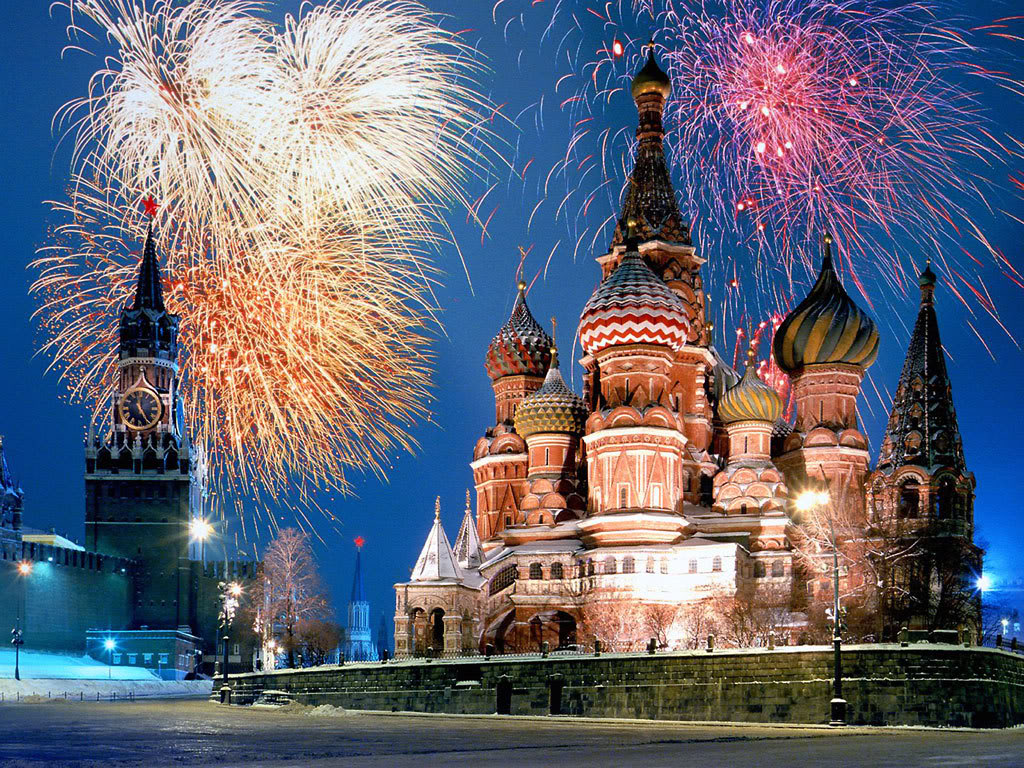Speak Russian with Victoria
Russian Culture, History and Traditions
РУССКАЯ КУЛЬТУРА, ИСТОРЯ И ТРАДИЦИИ
History and Traditions of Russian New Year
 Up to 1492 New Year celebrations in Russia took place in spring.
In 1492 Russian Tsar, Ivan III transferred the celebration of New Year to September 1.
It was the celebration of the end of harvest and time to pay taxes. Ivan III also
started a tradition to open the doors into the palace for visitors; on September 1 everyone could come
to his palace in Kremlin and beg for his mercy. Tsar gave an apple to every visitor
and called him a "brother".
Up to 1492 New Year celebrations in Russia took place in spring.
In 1492 Russian Tsar, Ivan III transferred the celebration of New Year to September 1.
It was the celebration of the end of harvest and time to pay taxes. Ivan III also
started a tradition to open the doors into the palace for visitors; on September 1 everyone could come
to his palace in Kremlin and beg for his mercy. Tsar gave an apple to every visitor
and called him a "brother".
In 1700 Peter the Great, looking at Europe, decided to transfer the beginning of new year to January 1. Peter the Great gave an order to rich people to decorate the streets with fir-trees, pines, or juniper- trees. Poor people could decorate the gates of their houses with branches of these trees. New Year Trees, called “yelki”, had to be ready by January 1 and kept until January 7. On the first day people were ordered to congratulate each other with New Year and to go to the Red Square where fireworks and shooting would begin. It was recommended to shoot from little canons or guns in yards three times and to make little fires outside every night. Peter the Great also started a tradition of firing salute announcing the beginning of the New Year. The sky was beautifully illuminated by fireworks; people congratulated each other, had fun, danced, and gave presents to each other. It was the only state holiday in Russia which wasn't connected with church and very soon it became one of the most favorite.
Russian folks liked the new tradition very much because another old and very popular Russian holidays "Svyatki" was also celebrated in winter. During the period of Svyatki there was sledge riding, fortune telling, parties for young people, and special fancy dress parties where people, called “Ryazhennye”, in costumes and masks walked from house to house singing songs and asking for gifts, mostly food for parties.
Despite the fact that New Year in Russia was celebrated on January 1, the same as in other European countries, there was a 14 days difference between the Julian calendar followed by Russian church and the Gregorian calendar used by other countries. In 1918, after the revolution, a new Soviet government officially adopted the Gregorian calendar, while Russian church went on following the old Julian calendar. So, Russian folks started to celebrate both: the official New Year and the Old New Year. Nowadays the period of the feast lasts from January 1 to January 14 and includes celebration of Russian Orthodox Christmas on January 7, and a celebration of "Svyatki" which starts on January 7 and goes on up to January 19.
The most popular personages of Russian New Year are Father Frost and his granddaughter, a young girl made of snow, “Snegurochka”. Though Russian Father Frost is very similar to English Santa Claus, he rides in a sledge with three horses, called "Troyka"; he does not use chimney, and prefers to deliver presents together with his granddaughter directly into the hands of happy kids. Originally he wore a long blue and white fur coat, but influenced by his English brother, Santa, he often appears in a red coat now.
Father Frost has his own residence in Velikiy Ustyug and his own website with email adress. This year he celebrated his birthday on November 18. Here you can see a short movie about Father Frost’s birthday party.
You can find more information about Ded Moroz in Russian and English if you follow these links: Coat of arms of Ded Moroz and Father Frost by 'Hidden Europe'